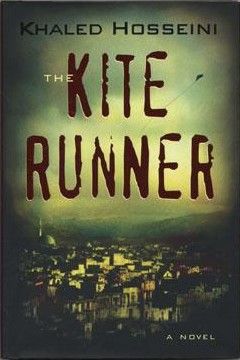The Kite Runner

The Kite Runner is the first novel by Afghan-American author Khaled Hosseini.[1] Published in 2003 by Riverhead Books, it tells the story of Amir, a young boy from the Wazir Akbar Khan district of Kabul. The story is set against a backdrop of tumultuous events, from the fall of Afghanistan’s monarchy through the Soviet military intervention, the exodus of refugees to Pakistan and the United States, and the rise of the Taliban regime.
Hosseini has commented that he considers The Kite Runner to be a father-son relationship story, emphasizing the familial aspects of the narrative, an element that he continued to use in his later works.[2] Themes of guilt and redemption feature prominently in the novel,[3] with a pivotal scene depicting an act of sexual assault that happens against Hassan that Amir fails to prevent. The situation as a whole was the main reason why Amir and Hassan’s friendship ended. The latter half of the book centers on Amir’s attempts to atone for this transgression by rescuing Hassan’s son two decades later.
The Kite Runner became a bestseller after being printed in paperback and was popularized in book clubs. It appeared on the New York Times bestseller list for over two years,[4] with over seven million copies sold in the United States.[5] Reviews were generally positive, though parts of the plot drew significant controversy in Afghanistan. A number of adaptations were created following publication, including a 2007 film of the same name, several stage performances, and a graphic novel. The novel is also available in a multi-CD audiobook read by the author.
Khaled Hosseini worked as a medical internist at Kaiser Hospital in Mountain View, California for several years before publishing The Kite Runner.[3][6][7] In 1999, Hosseini learned through a news report that the Taliban had banned kite flying in Afghanistan,[8] a restriction he found particularly cruel.[9] The news “struck a personal chord” for him, as he had grown up with the sport while living in Afghanistan. He was motivated to write a 25-page short story about two boys who fly kites in Kabul.[8] Hosseini submitted copies to Esquire and The New Yorker, both of which rejected it.[9] He rediscovered the manuscript in his garage in March 2001 and began to expand it to novel format at the suggestion of a friend.[8][9] According to Hosseini, the narrative became “much darker” than he originally intended.[8] His editor, Cindy Spiegel, “helped him rework the last third of his manuscript”, something she describes as relatively common for a first novel.[9]
As with Hosseini’s subsequent novels, The Kite Runner covers a multigenerational period and focuses on the relationship between parents and their children.[2] The latter was unintentional; Hosseini developed an interest in the theme while in the process of writing.[2] He later divulged that he frequently came up with pieces of the plot by drawing pictures of it.[7] For example, he did not decide to make Amir and Hassan brothers until after he had “doodled it”.[7]
Like Amir, the protagonist of the novel, Hosseini was born in Afghanistan and left the country as a youth, not returning until 2003.[10] Thus, he was frequently questioned about the extent of the autobiographical aspects of the book.[9] In response, he said, “When I say some of it is me, then people look unsatisfied. The parallels are pretty obvious, but … I left a few things ambiguous because I wanted to drive the book clubs crazy.”[9] Having left the country around the time of the Soviet invasion, he felt a certain amount of survivor’s guilt: “Whenever I read stories about Afghanistan my reaction was always tinged with guilt. A lot of my childhood friends had a very hard time. Some of our cousins died. One died in a fuel truck trying to escape Afghanistan [an incident that Hosseini fictionalizes in The Kite Runner]. Talk about guilt. He was one of the kids I grew up with flying kites. His father was shot.”[2][11] Regardless, he maintains that the plot is fictional.[8] Later, when writing his second novel, A Thousand Splendid Suns (then titled Dreaming in Titanic City), Hosseini remarked that he was happy that the main characters were women as it “should put the end to the autobiographical question once and for all.”[9]
